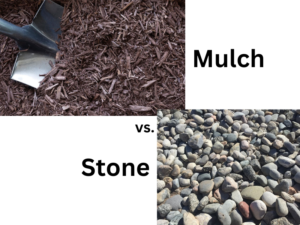Stay Green and Save Water: Cool Season Lawn Care in a Drought
Southeastern Pennsylvania has seen its share of hot temperatures and dry conditions. It seems that each year we’re in a water deficit. You know when your lawn is drought-stressed when the grass crunches underfoot and turns brown.
How can you help your Jamison, PA lawn survive a drought or when the temperature outside reaches 90°F and above for 3-5 days? Through smart watering and preventative lawn care.
A Quick Review of Cool Season Lawns
Since Pennsylvania has cold springs, cool season turfgrasses grow well in our lawns. Cool season means that the turfgrass grows in cooler temperatures—that’s why you can stop mowing your lawn when your turf gets brown and goes into dormancy.
Spring and fall are the best times for growing a cool season lawn in Doylestown and Hatboro, PA.
According to Penn State Extension, cool season turfgrasses include Kentucky bluegrass, rough bluegrass, perennial ryegrass, fine fescues, tall fescue, and bentgrass.
Preventative lawn maintenance is one way to help your turf survive drought and hot summer days.
Optimizing Your Lawn’s Health During the Growing Season to Combat Drought
While you can’t stop your Chalfont, PA, lawn from going into dormancy, you can prepare the soil and the turf before July rolls around.
Your goal should be to improve soil quality and moisture retention well before the summer heat starts. You should be committed to a regular lawn care plan that encourages turfgrass to grow roots deep into the soil and for the ground to hold onto moisture longer.
Here are five best practices for growing a robust lawn that survives summer drought:
- Do a soil test every two years
Your lawn care company takes soil samples and has them tested to see what nutrients are missing and if the pH is balanced or needs amending.
The results from the soil test determine what ratio of nutrients are needed to get your lawn to optimal health and to see if lime is needed to bring the soil back to a healthy pH.
- Aerate or de-thatch your lawn
Every other year you should have your lawn aerated, which takes plugs of soil out of the ground so it can breathe and takes in nutrients and oxygen.
On the off years, you should de-thatch your lawn if there’s over a 1/2” of thatch between the live turf and the soil line. De-thatching allows nutrients and water to reach the soil line. Also, excess thatch holds moisture away from the soil leading to diseases.
In spring, schedule a time for liquid aeration with your Bucks and Montgomery counties’ lawn care pros. Liquid aeration is a non-toxic liquid aeration treatment safe for people, pets, plants, and the ecosystem. It loosens up your soil for spring fertilization treatments.
- Use compost or other soil amendments
Compost provides more nutrients to the soil and adds extra moisture.
- Apply weed control to protect your turfgrass
Weeds happen—but you can control them with regular weed control treatments.
Weeds compete with your turfgrass for water, nutrients, and sun. Let turfgrass dominate your lawn to stay healthy during the hot summer months.
- Mow your lawn to 2” – 3” in the summer
Turfgrass experts recommend only taking the top third off your lawn with each mow, especially during the hot, dry months of July and August.
Allowing your grass to grow a bit longer enables it to shade the soil, develop deeper roots, and conserve water in the grass blades.
Don’t mow your lawn when it’s in dormancy. The turf isn’t growing and will take a week or so to recover when temperatures cool and rain returns.
Practical Techniques for Water Conservation during Smart Irrigation Month
July is Smart Irrigation Month and the hottest, driest time of year for southeastern PA. Now is the best time to conserve water but keep your turfgrass alive.
Here are smart lawn watering tips to get you through the dog days of summer:
- If you have an in-ground water sprinkler, ensure it’s recalibrated with WiFi or Bluetooth to schedule when the system goes off and on. If you don’t have an irrigation system, invest in soaker hoses with a timer to water your lawn.
Learn more: We Offer Lawn and Garden Services
- Water your lawn in the early morning hours between 4 a.m. to 6 a.m. when there’s less wind. Your other alternative is to water your lawn in the early evening so no water lays on grass blades overnight.
- Don’t spray your lawn with a little sprinkle every day. Your lawn needs to have 1” – 2” of water per week. Deep, infrequent lawn irrigation is best for keeping your turfgrass alive.
- If it rains during the week, subtract the total rain amount from 1” to 2”. That’s how much you’ll need to water your lawn during a rainy week.
- Buy a moisture or weather sensor for your irrigation system so it turns off automatically when it starts to rain.
Experience Complete Turfgrass Maintenance with Jamison Lawn Care
If you live in Bucks or Montgomery County, you need Jamison Lawn Care if you want a beautiful property. Jamison Lawn Care has provided turfgrass maintenance, landscaping, and gardening services for the past eight years.
Call Jamison Lawn Care today at 267-621-4747 or fill out their contact form.
Source:
Extension.PSU.edu, Turfgrass Species for Pennsylvania.



